Product Ecologies: Difference between revisions
No edit summary |
No edit summary |
||
| Line 18: | Line 18: | ||
[[Image:5b-agricultureeco.png|border|600px|Agriculture]] Original: [http://opensourceecology.org/wiki/File:Agricultureeco.png] | [[Image:5b-agricultureeco.png|border|600px|Agriculture]] Original: [http://opensourceecology.org/wiki/File:Agricultureeco.png] | ||
[[Image: | [[Image:6b-Powercubeeco.png|border|600px|Power Cube]] Original: [http://opensourceecology.org/wiki/File:Powercubeeco.png] | ||
[[Image: | |||
[[Image:7b-Materialseco.png|border|600px|Materials Ecology]] Original: [http://opensourceecology.org/wiki/File:Materialseco.png] | |||
[[Image:hotmetalecology.png|thumb|Hot Metal Processing Ecology]] | [[Image:hotmetalecology.png|thumb|Hot Metal Processing Ecology]] | ||
[[Image:customfabecology.png|thumb|Custom Fabrication Ecology - basic custom fabrication minus full fab lab lab capacity]] | [[Image:customfabecology.png|thumb|Custom Fabrication Ecology - basic custom fabrication minus full fab lab lab capacity]] | ||
Revision as of 01:52, 27 July 2011
Introduction
Product Ecologies illustrate how the different tools of the GVCS work together. For example, motors, power units, and implements interchange within the tractor, microtractor, car, truck, fabrication, and bulldozer infrastructures. Ecologies can also refer to the way in which a set of tools can be put together to produce a wide array of products - such as the induction furnace contributing to the production of tractor parts, construction roofing, or wire.
Note also: the materials ecology shown on this page should be compared to and integrated with the Solar Economy flow graphic here
Product Ecologies
There is a number of product ecologies that can be drawn up:
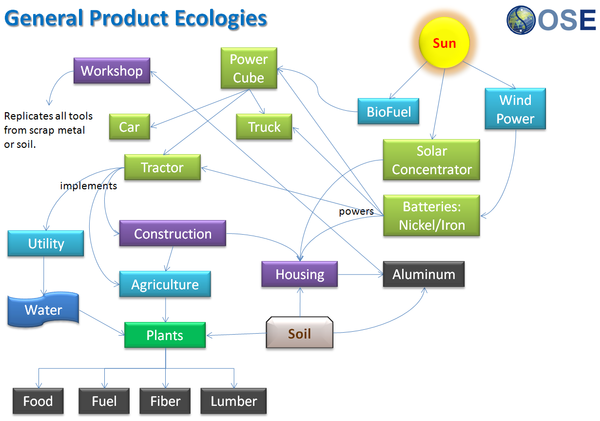 Original: [1]
Original: [1]
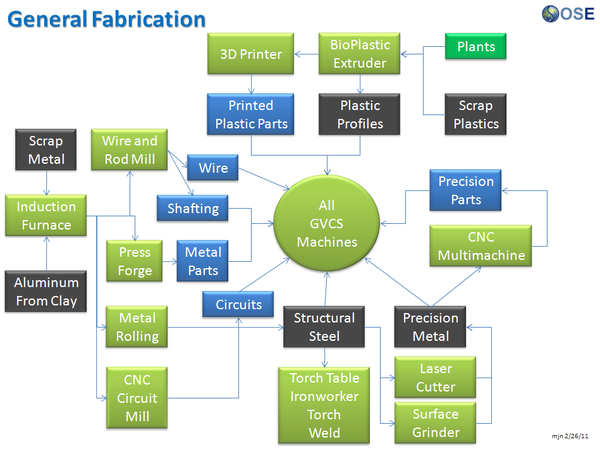 Original: [2]
Original: [2]
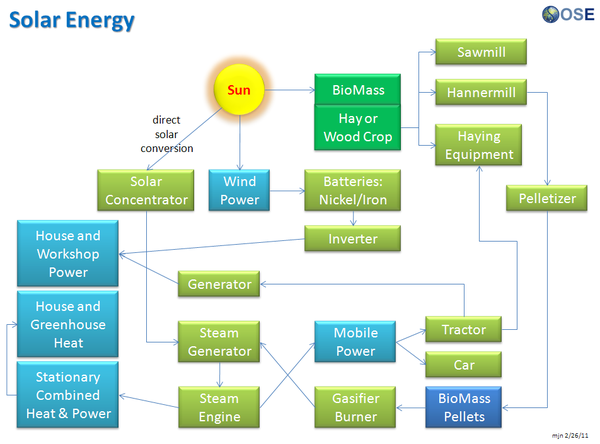 Original: [3]
Original: [3]
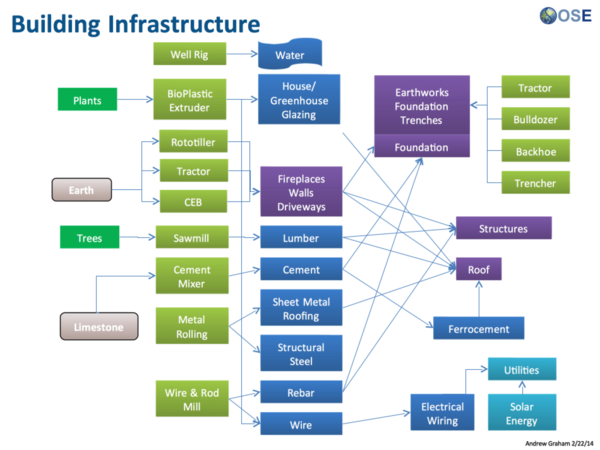 Original: [4]
Original: [4]
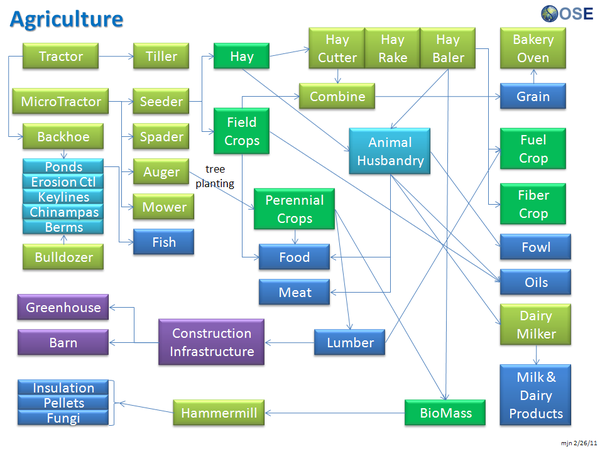 Original: [5]
Original: [5]
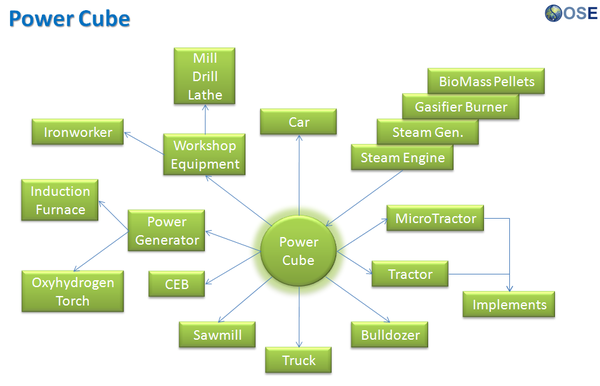 Original: [6]
Original: [6]
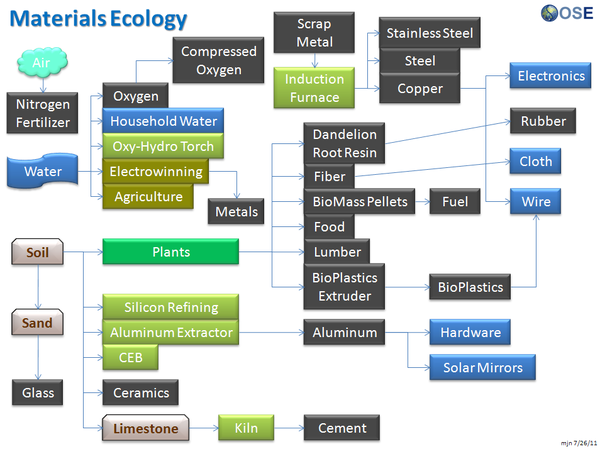 Original: [7]
Original: [7]
Links
- Factor e Live Distillations video on product ecologies from 2009 - this has been updated in Proposal 2012






